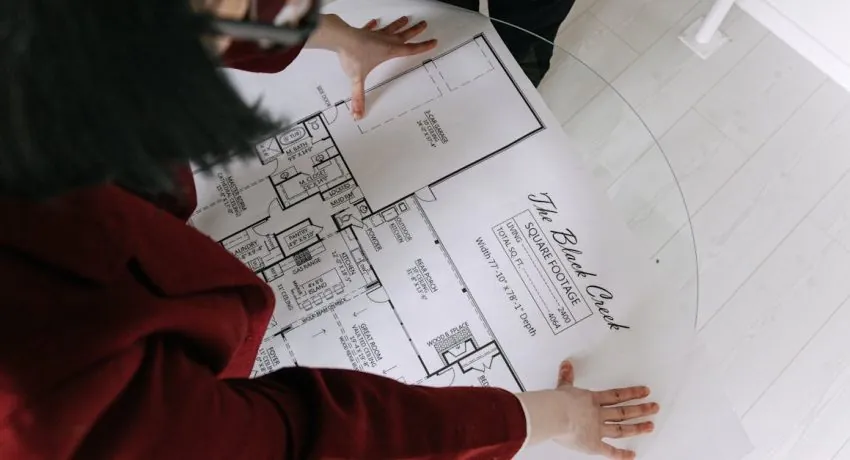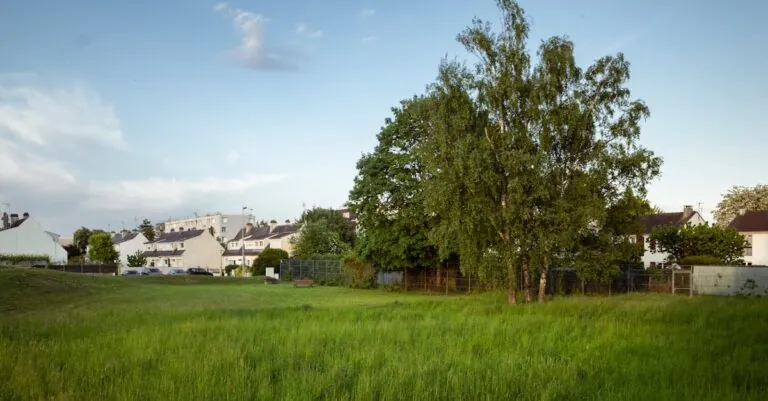In the wild world of Washington housing, where the coffee is strong and the real estate prices are stronger, navigating the market can feel like trying to find a needle in a haystack—if that needle were a charming bungalow and the haystack were a mountain of paperwork. From the bustling streets of Seattle to the serene suburbs of Spokane, the housing landscape is as diverse as the state’s weather.
Whether you’re a first-time buyer or a seasoned investor, understanding the nuances of Washington’s housing market is crucial. With trends shifting faster than a Seattleite can say “rain,” staying informed is key. Join the adventure as we dive into the current state of housing in Washington, uncovering insights that’ll help anyone make the best decision—without losing their sanity or their coffee budget.
Table of Contents
ToggleWashington Housing Overview
Washington’s housing market exhibits notable fluctuations in pricing, impacting both buyers and investors. Seattle remains a focal point, with median home prices surpassing $800,000 as of October 2023. Surging demand in urban areas contributes to rising costs, forcing some potential buyers to consider suburban alternatives.
Investors notice that rental rates also experience upward pressure. Average rent in the state exceeds $2,200 per month, resulting in favorable conditions for landlords. Significant population growth fuels this demand, as newcomers migrate for job opportunities and quality of life.
Market trends reveal a limited inventory of single-family homes. The current months of supply stands at approximately 1.8, indicating a competitive environment. Buyers frequently encounter bidding wars, leading to properties selling well above the listing price.
While the situation may seem daunting for first-time buyers, various assistance programs exist. Programs offer down payment assistance, creating pathways to homeownership. Local initiatives aim to bolster affordable housing options, addressing the needs of lower-income families.
Interest rates currently hover around 6.5%, impacting buyers’ purchasing power. Higher rates often lead to increased monthly payments, making financial planning essential. Understanding these economic indicators proves crucial for anyone navigating the market.
Monitoring neighborhood trends provides insights into long-term investment opportunities. Areas such as Tacoma and Spokane show promise for appreciation due to infrastructure developments. Evaluating the housing landscape informs smarter investment decisions and enhances the likelihood of success in this dynamic market.
Current Market Trends
The Washington housing market exhibits distinct trends as of October 2023, requiring close attention for effective navigation. Price fluctuations and supply-demand dynamics significantly influence both buyers and investors.
Price Fluctuations
Median home prices in Seattle have exceeded $800,000. Such prices reflect a surge in demand from urban buyers, resulting in many opting for suburban alternatives. Some neighborhoods have seen properties selling above their listing prices due to competitive bidding wars. These fluctuations complicate the buying process, especially for first-time buyers. Significant regional variations also exist, so it’s essential to monitor localized pricing trends.
Demand and Supply Analysis
Washington currently faces a limited inventory of single-family homes, with around 1.8 months of supply available. This shortage intensifies competition among buyers and drives prices higher. As rental rates rise to an average of over $2,200 per month, landlords benefit amidst ongoing population growth. Careful consideration of neighborhood trends becomes integral for identifying future investment opportunities. Areas like Tacoma and Spokane emerge as promising choices due to ongoing infrastructure developments. Understanding these dynamics proves vital in making informed real estate decisions within the state.
Types of Housing
Washington’s housing market features a variety of options to suit diverse needs and preferences. Understanding these types can help buyers identify the best fit for their lifestyle.
Single-Family Homes
Single-family homes constitute a popular choice among Washington buyers, particularly for families. Many properties provide spacious yards and multiple bedrooms, catering to those seeking room to grow. Median prices exceed $800,000, driven by high demand in urban areas. The limited inventory contributes to competitive bidding wars. Sellers often receive offers above listing prices, making home-buying challenging, especially for first-time buyers. Suburban alternatives may attract buyers looking for affordability without sacrificing quality of life.
Condominiums and Apartments
Condominiums and apartments offer a viable alternative for those prioritizing convenience and affordability. Many units provide modern amenities and are located near city centers, facilitating easy access to public transportation and local attractions. Rental rates average over $2,200 per month, reflecting rising demand in densely populated areas. Buyers favor condominiums for lower maintenance obligations compared to single-family homes. Young professionals and retirees often gravitate towards this housing type, seeking a vibrant community atmosphere.
Luxury Real Estate
Luxury real estate is thriving in Washington, particularly in sought-after neighborhoods. Prices in this segment cater to affluent buyers, with homes often surpassing millions. High-end properties typically boast premium features, such as expansive floor plans, gourmet kitchens, and stunning views. Buyers seek homes with exclusive amenities like private pools and home theaters. Areas like Capitol Hill and Bellevue are known for luxury offerings, attracting notable interest from investors. This segment presents unique opportunities for wealth-building through real estate investment.
Neighborhood Insights
Understanding neighborhood dynamics is essential when navigating the Washington housing market.
Best Neighborhoods for Families
Families often prefer neighborhoods that offer excellent schools, parks, and community amenities. Areas like Bellevue and Redmond stand out with their highly-rated school districts and vibrant recreational spaces. Safe streets and friendly communities contribute to the appeal of these locations. Additionally, North End in Tacoma provides a mix of suburban comfort with access to urban conveniences, making it attractive for families. Proximity to employment centers greatly influences family choices, offering a balance of work and home life. With median home prices in these neighborhoods often exceeding the statewide average, families prioritize finding suitable housing that accommodates their needs.
Up-and-Coming Areas
Several neighborhoods in Washington show promising growth potential for investors. For instance, South Lake Union in Seattle is transforming rapidly with ongoing development. New residential buildings and commercial spaces attract younger professionals and families alike. Similarly, the Hilltop neighborhood in Tacoma is experiencing revitalization, fostering community engagement and innovation. Rising property values are evident, making these areas prime for future investments. Infrastructure projects and public transportation enhancements create further opportunities for appreciation. Investors keen on strategic decisions focus on these neighborhoods, seeking to capitalize on upcoming trends while examining the evolving market landscape.
Challenges Facing the Market
The Washington housing market encounters several significant challenges impacting buyers and investors. Affordability remains a major concern amidst soaring prices and rising interest rates.
Affordability Issues
Affordability issues affect many potential homeowners throughout Washington. With median home prices exceeding $800,000, first-time buyers face considerable hurdles. Limited inventory compounds this problem, resulting in bidding wars that drive prices even higher. Over 1.8 months of supply emphasizes the competitive nature of the market. Rental rates, averaging above $2,200 per month, further strain budgets for those seeking housing. These factors force some buyers to consider more affordable suburban options.
Regulatory Challenges
Regulatory challenges add another layer of complexity to the housing market. Zoning regulations often restrict the development of new housing units, contributing to inventory shortages. Some areas have stringent guidelines that limit construction, stifling opportunities for growth. Additionally, regulatory delays in permitting can significantly prolong project timelines, frustrating developers and investors alike. Compliance with new environmental mandates can increase costs, further complicating affordability. Understanding these regulations is crucial for anyone looking to navigate the evolving Washington housing landscape.
Conclusion
Navigating the Washington housing market requires a keen understanding of its complexities. Buyers and investors alike must stay informed about current trends and challenges to make sound decisions. With the ongoing demand for housing and rising prices, strategic planning is essential.
Opportunities exist in various neighborhoods, particularly for those willing to explore emerging areas. As the market continues to evolve, staying updated on inventory levels and economic indicators will be crucial. By leveraging available resources and understanding local dynamics, individuals can successfully navigate this competitive landscape.




